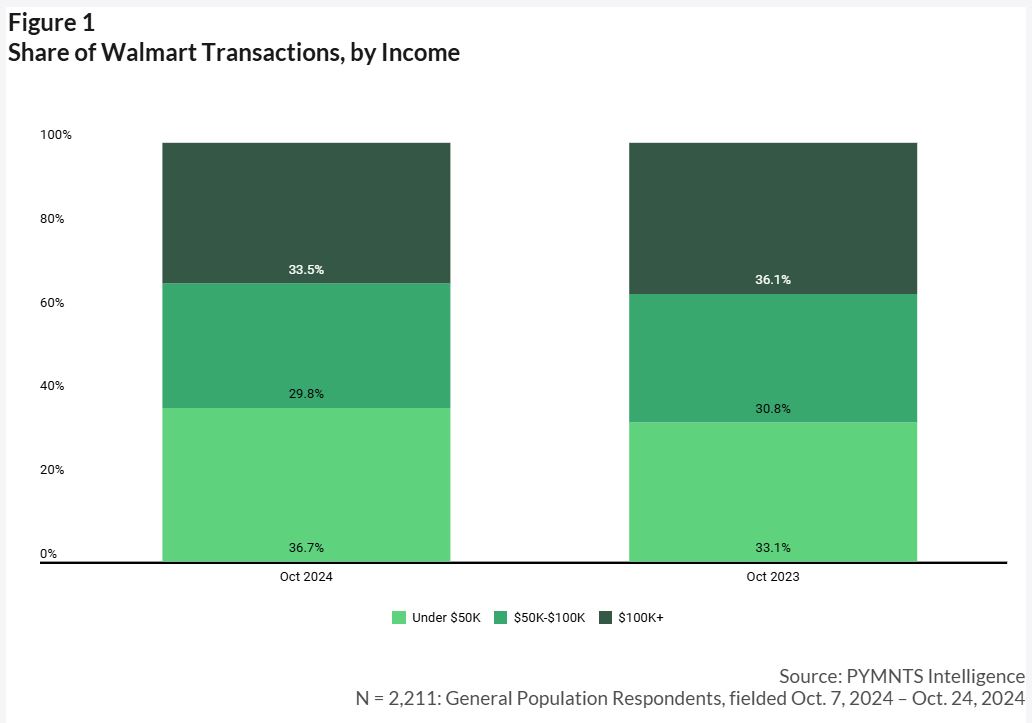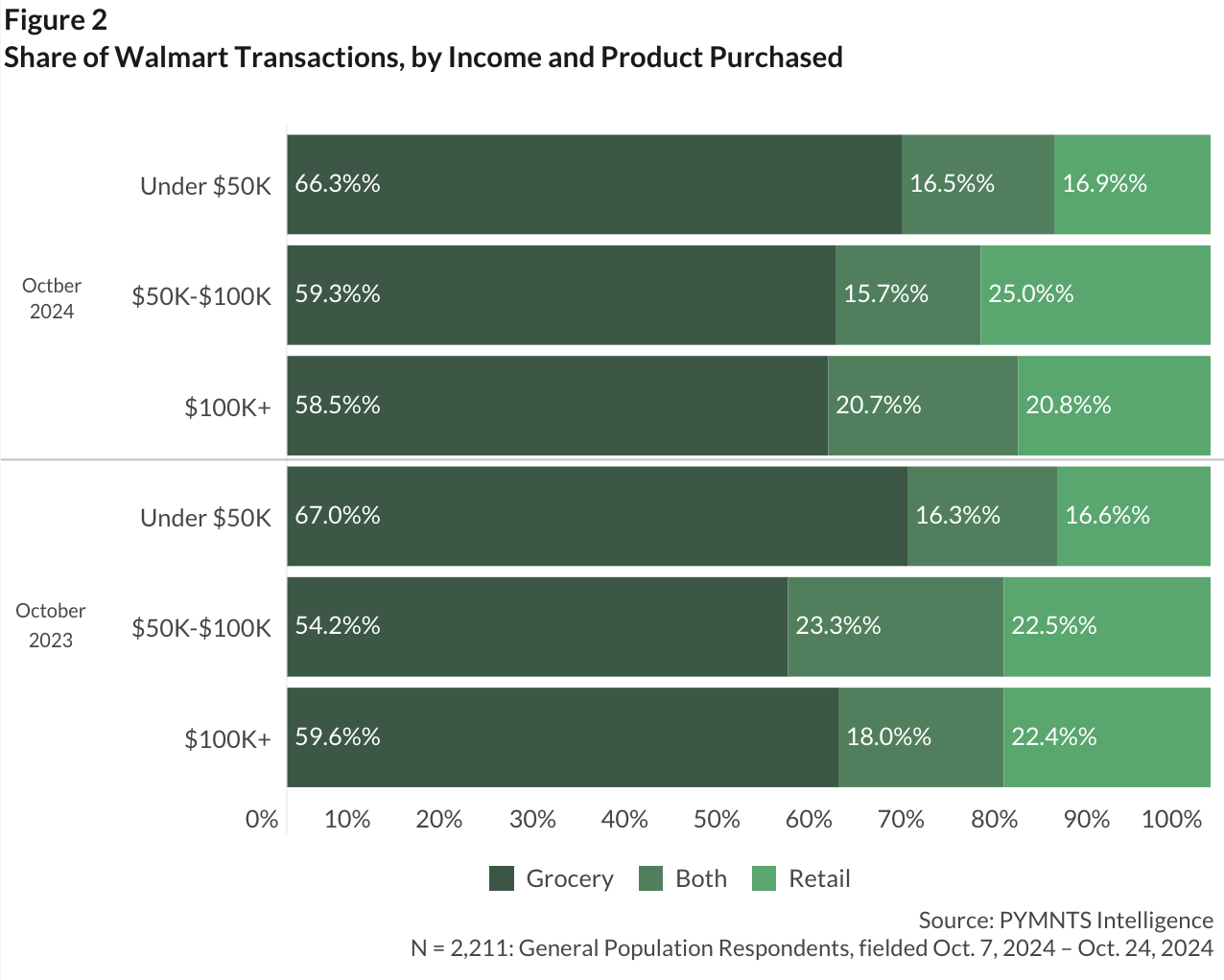High-Income Shoppers Load Up Their Grocery Carts at Walmart
During the latest conference call with analysts, Walmart’s management observed that that, in a quarter where same-store sales were up 5.3% in the United States, transaction counts and unit volumes were positive across each segment of spending.
“We continue to gain market share in the U.S., both in grocery and general merchandise. Households earning more than $100,000 made up 75% of our share gains,” said CEO Doug McMillon. And, echoed CFO John Rainey, engagement across all income levels has been increasing.
During the question-and-answer session with analysts, McMillion expanded on just where the higher income shoppers are shopping.
“We want to sell grocery and [general merchandise],” he said. “If you go through and look at it by category, by income level, it kind of plays out the same way general merchandise does … people come to us to shop as a primary destination in many instances.”
He added: “If you look at our offer in food and consumables, our shares are pretty high and consistent relative to some of the things we see in general merchandise.”
One tailwind to growth has come through the blurring of the lines between digital and physical channels.
Omnichannel Appeal“In an omni world, we have an opportunity with brands, we have an opportunity with presentation to increase the amount of market share we have in some of those categories,” McMillion said. “And that eCommerce opportunity is kind of bearing out as we grow our assortment. We’re able to appeal to more people and appeal to higher income level.”
Later in the call, he noted that “those that have more discretionary income and want to save time are liking what we’re doing with both pickup and delivery.”
Sam’s Club offers a snapshot, too, of a higher income clientele.
In his own remarks on the earnings call, Chris Nicholas, Sam’s Club president and CEO, said: “While we serve all income cohorts, we do definitely skew higher than the core of Walmart. And what I would say is that they love price more than anybody. Price is a core competitive advantage of ours.”
The company’s latest fiscal quarter earnings details illustrated that comp sales were up 7%, while the average ticket growth was 0.5% for the Sam’s Club operations.
Higher Earners Looking to Stock the PantryPYMNTS Intelligence’s own data has found that the actual share of transactions among high-income shoppers — as in transaction count — has actually slipped a bit, declining from 36.1% to 33.5% year on year.

But drill down a bit, and the lure of buying in bulk — and stretching dollars — has snared high-income shoppers.
While its true that high-income consumers do buy “more” retail than their low-income counterparts, 80% of the time high-income shoppers shop Walmart, they buy groceries along with other retail items; almost 60% of the time it’s only groceries.

Earlier this year, we found that soaring grocery costs had led a third of high-income households to change to cheaper merchants to get their groceries. Only 22% of consumers in this cohort said that inflation had not impacted their shopping habits at all. Given the fact that earlier this year we found that about half of high earners were living paycheck to paycheck, budgets are top of mind, even for those with relatively higher take home pay.
The post High-Income Shoppers Load Up Their Grocery Carts at Walmart appeared first on PYMNTS.com.
